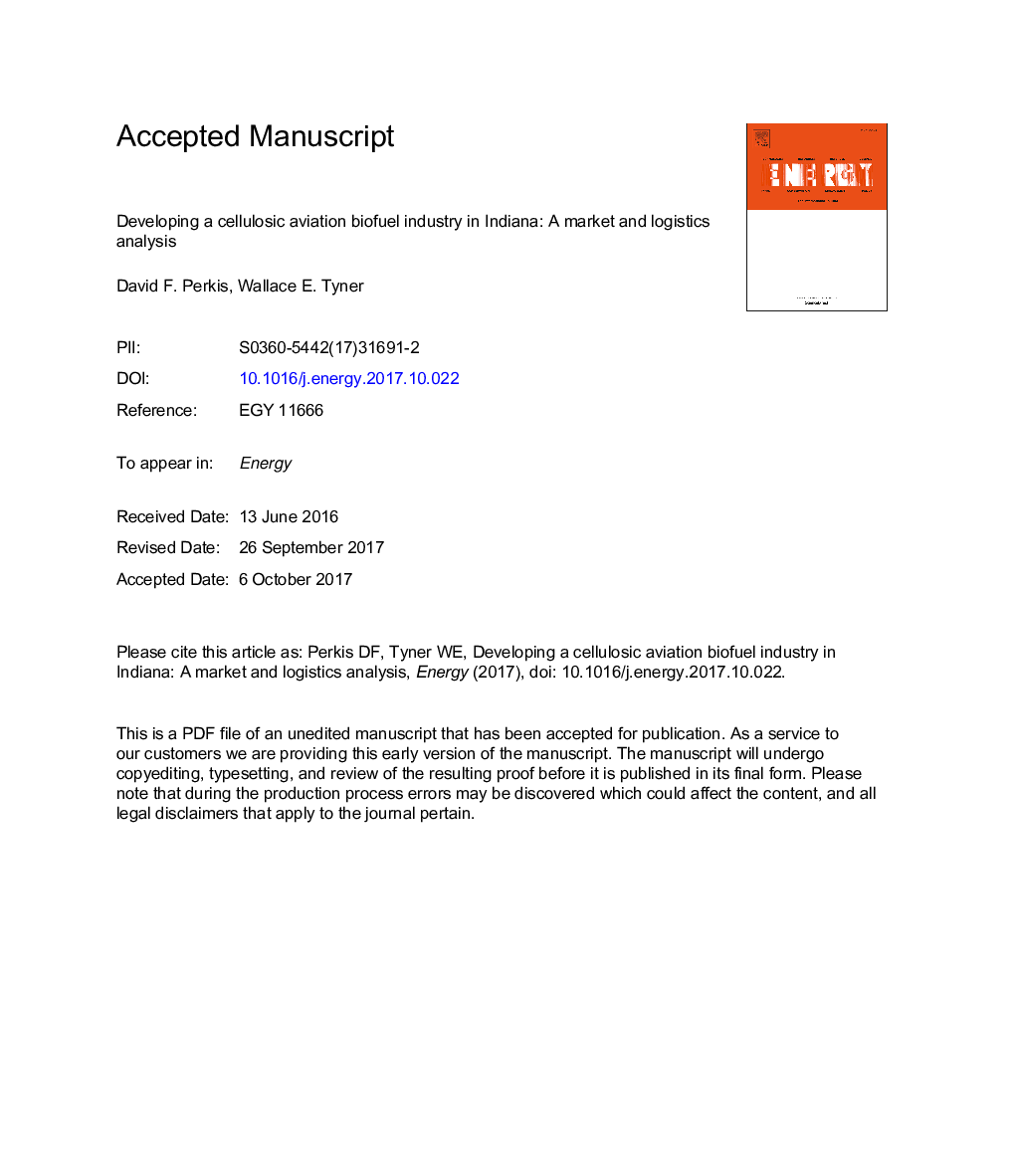| Article ID | Journal | Published Year | Pages | File Type |
|---|---|---|---|---|
| 8072555 | Energy | 2018 | 25 Pages |
Abstract
With the non-advanced portion of the US Renewable Fuel Standard having been largely met by corn ethanol, many states are looking to cellulosic crops as the next source of biofuels. In Indiana, attention is turning to biojet fuels and renewable diesel as forming the demand for these crops. This paper seeks to determine the optimal manufacturing site locations and supply chain logistics for the conversion of biomass sources to jet fuel and renewable diesel within Indiana. A sequential start-up model is developed for this application, using a mixed integer non-linear (quadratic) program, in which firms sequentially optimize unit costs by choosing the conversion site location, scale, and feedstocks. The results indicate that firms wish to locate conversion sites near biomass sources as opposed to fuel destinations, and that early entrants to the industry gravitate towards counties rich in corn stover, a less expensive residue. However, even with existing subsidies firms would barely break even. Finally, the benefits of the sequential model are elucidated in contrast to a social planner's model, with the key benefit being that the sequential model can generate supply curves independent of demand levels.
Related Topics
Physical Sciences and Engineering
Energy
Energy (General)
Authors
David F. Perkis, Wallace E. Tyner,
